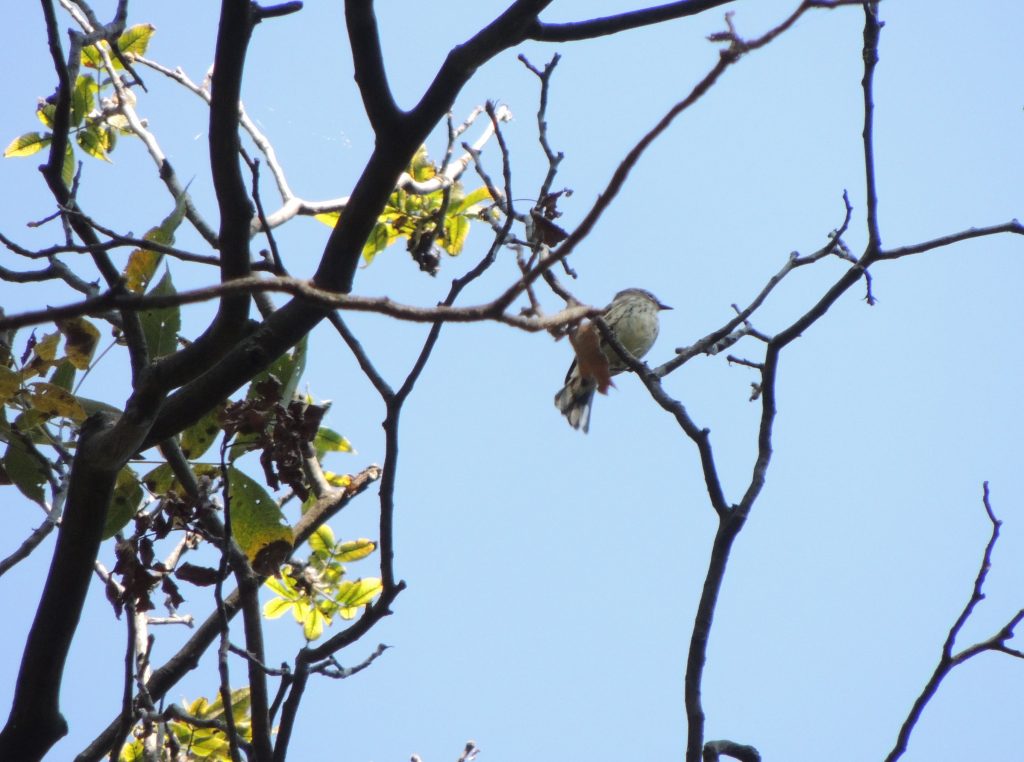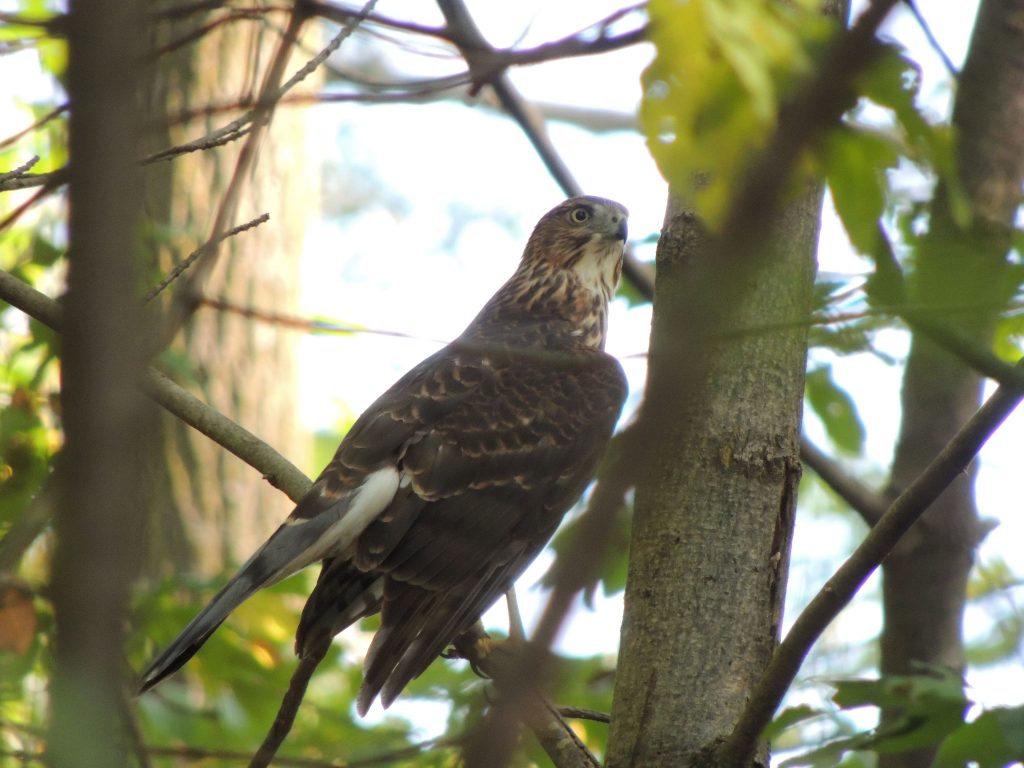September 26th 2017. RBG Arboretum, Hamilton, ON. Another hot day brought low expectations for bird activity. Today was forecasted to be almost the last of this dehydrating heat wave. My companion and I made our way through woodlands listening to Blue Jays screeching and chuckling and walked a lakeside trail scanning the waters hoping for something more interesting than the usual rolling and roiling flocks of hungry Double-crested Cormorants.
At a time when we would normally be seeing active small migrants, warblers, vireos and the like, we struggled to find much movement in the trees at all. We spent an inordinate amount of time trying to make out this small warbler, neck-wrenchingly high overhead. Here’s a blown-up photo, the best I could get and I think it was a Myrtle Warbler.

A word about Myrtle Warblers is in order here. In about 1974 when I first started birding in Canada there were Myrtle Warblers, I won’t say I knew them well; they were just one more puzzling warbler species among the two or three dozen that might be encountered. Around that time a formal committee of the American Ornithologists’ Union decided that Myrtle Warbler was too sweepingly vague and that it should thereafter be split into at least two species; our local bird would become the Yellow-rumped Warbler and out west there would be Audubon’s Warbler. Well, that did make it easier for many of us; Yellow-rumped is after all a perfectly descriptive name (whereas neither Myrtle nor Audubon’s tells a novice birder anything helpful). And so for as long as I have been posting to this site I have greeted Yellow-rumped Warblers countless times, they are a conspicuous and much-loved part of our avifauna. But the Yellow-rumped is no more: it and its close relatives have been re-sorted and the Myrtle Warbler is back with us.
Our Bird of the Day was a pair of young Cooper’s Hawks that stormed us, flying low and fast up the middle of a trail, approaching us at eye-level and only breaking away at the last moment. They split, one veered to the lake while the other shot to our right and settled in a tree not five metres away. It sat nervously on a branch watching us warily but allowed me to take several pictures, here’s one of the best.

It all happened so fast and I was uncertain, were they Sharp-shinned or Cooper’s Hawks? The two species are all but identical and my opportunistic photos didn’t help much. There are some subtle plumage and structural differences and Sharp-shins are generally smaller, but only generally smaller because a female Sharp-shinned may be larger than a male Cooper’s. After the fact examination of my photos and some poring over texts persuaded me these were young Cooper’s Hawks.
We were still tingling from this close engagement when a little later we saw two more Cooper’s Hawks who were trying to ignore groups of protesting Blue Jays; the jays chased and screamed and the hawks coarsely SSHHhhhd back at them.